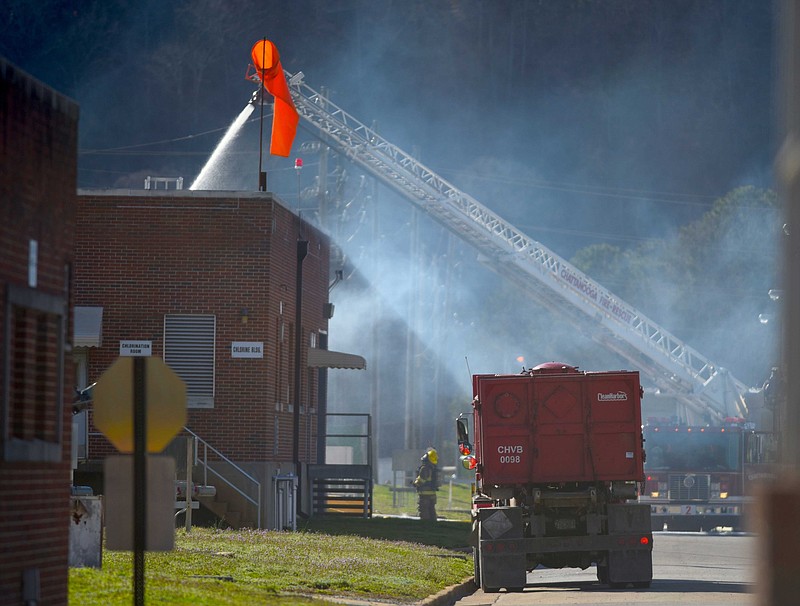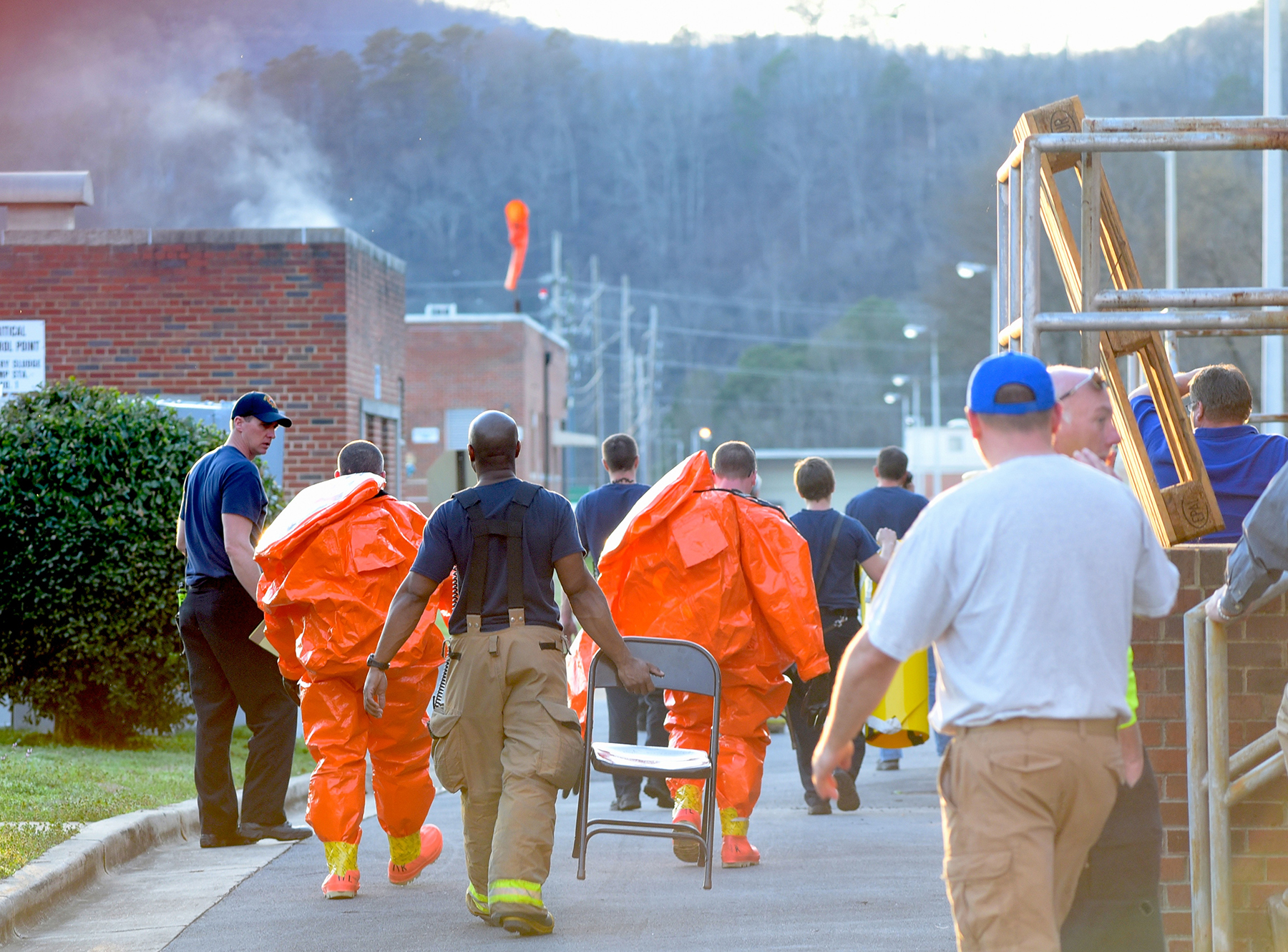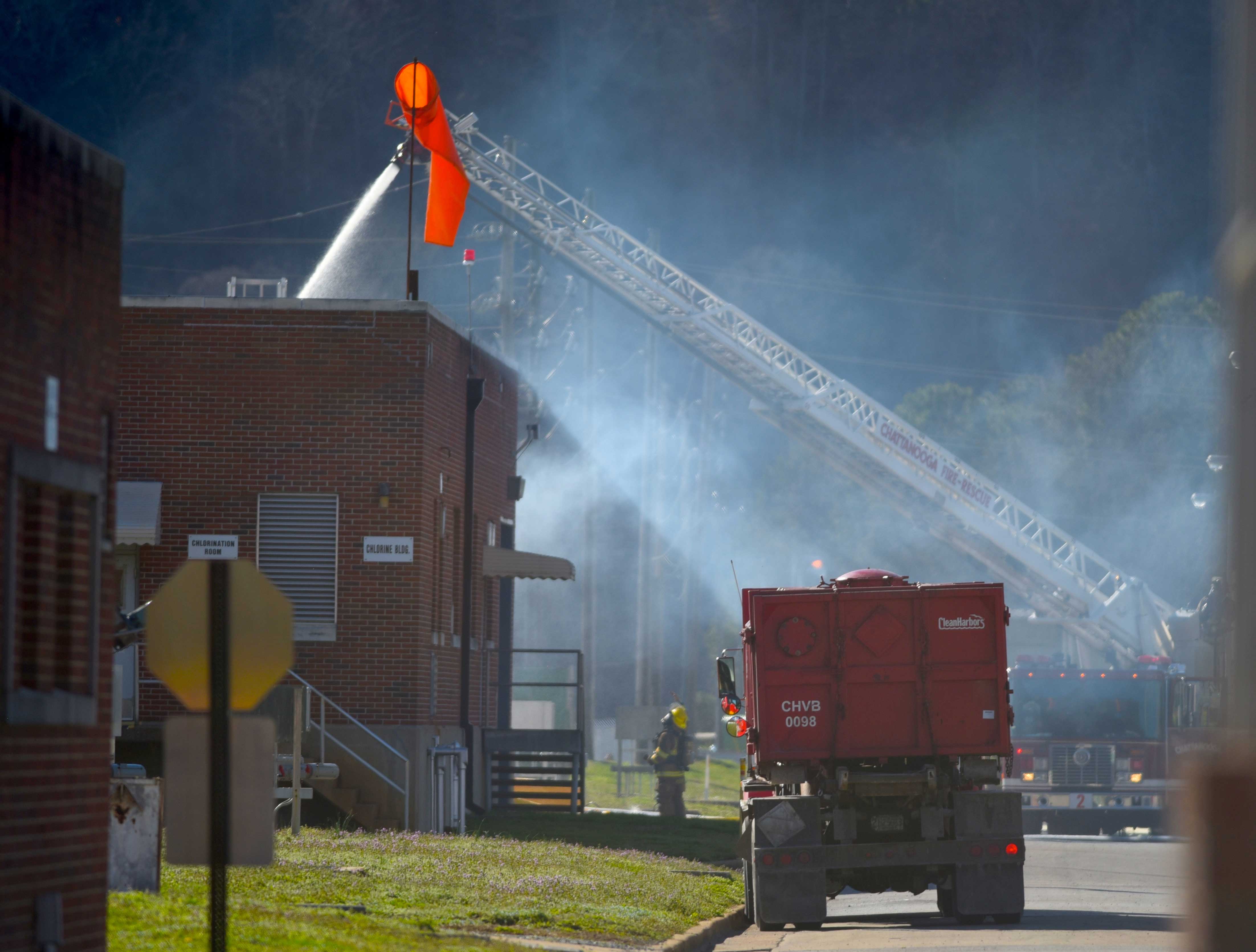Chattanooga averted a disaster Monday after nearly a ton of poisonous chlorine gas leaked from its container at the city's sewer plant but was contained before it escaped into the atmosphere.
Yet the enormous leak, which officials said was caused by a plant employee, sent two workers to the hospital and caused the building's safety equipment to overheat twice in less than 12 hours.
On Monday afternoon, emergency crews were called back to the Moccasin Bend Wastewater Treatment Plant for the third time in less than a day, according to the Chattanooga Fire Department. A piece of safety equipment known as a scrubber began to smolder and released a mushroom cloud of smoke from the top of the chlorine building that contains a number of 1-ton cylinders of the toxic gas.
Firefighters had to spray gallons of water and then foam into the top of the scrubber -- which is the safety equipment for three 1-ton cylinders inside the building. The air Monday afternoon had both a strong burnt smell and a scent similar to a public swimming pool.
Chattanooga Fire Department Chief of Operations Chris Adams said the scrubber likely overheated when a cleaning crew began to wash it out, and the oxygen caused a chemical reaction and heated up the equipment. Crews will likely stay overnight, he said, to continue to monitor the heat and air levels.
The chemical reaction stumped both plant workers and even manufacturers of the equipment and the chemical.
"It's something that nobody has seen before," Adams said. "Everybody is scratching their heads."
Even small exposure to chlorine gas can burn the eyes, skin and throat. Large exposure can cause permanent lung damage, or death. Chlorine is the most widely used industrial chemical in the world and is second only to carbon monoxide for percentage of accidents that cause injuries, according to Environmental Health News.
One of the most deadly chlorine gas accidents occurred in Graniteville, S.C., in 2005 when two freight cars collided, releasing about 60 tons of gas into the air, killing nine people and hospitalizing another 550 people.
Chlorine gas is so toxic that some companies -- including the city of Chattanooga's wastewater treatment plant -- are moving away from using the chemical.
Michael Patrick, the city's wastewater division director, said the city has been working on an $8 million project to replace chlorine with sodium hypochlorite -- commonly known as bleach.
It was 6 p.m. on Sunday when emergency crews were initially called to Chattanooga's treatment plant -- located less than 2 miles from downtown -- for a chlorine leak. Patrick said an employee inside the room where the containers are stored turned the wrong valve, releasing the gas into the air. The employee fled the room and the scrubber immediately turned on -- automatically shutting the emergency doors and sucking in the gas like a vacuum, he said.
Another worker who was outside of the room was exposed to the gas, Patrick said, and was taken to the hospital with unknown injuries. Neither the fire department nor Public Works employees could give an update on the condition of that city employee. The other employee was released from the hospital the same day, because he had been wearing a protective suit inside the chlorine room.
The fire department's emergency team was back at the plant a second time at 4 a.m. Sunday when the scrubber began to overheat for the first time. But officials said all the poisonous gas had already been turned to water vapor and nothing escaped into the air.
If any of the gas had been released, the fire department would have monitored the wind levels and decided whether to evacuate any of the nearby houses. There are multiple houses located across the street from the plant, and a large population lives about a mile away.
The city will replace the scrubber as soon as possible, estimating it will cost $150,000 to fix.
Federal and state environmental and safety agencies will investigate the leak and Public Works Assistant Director Justin Holland said the city will also do an analysis to identify any failures in safety policies or procedures.
Contact staff writer Joy Lukachick Smith at jsmith@timesfreepress.com or 423-757-6659.


